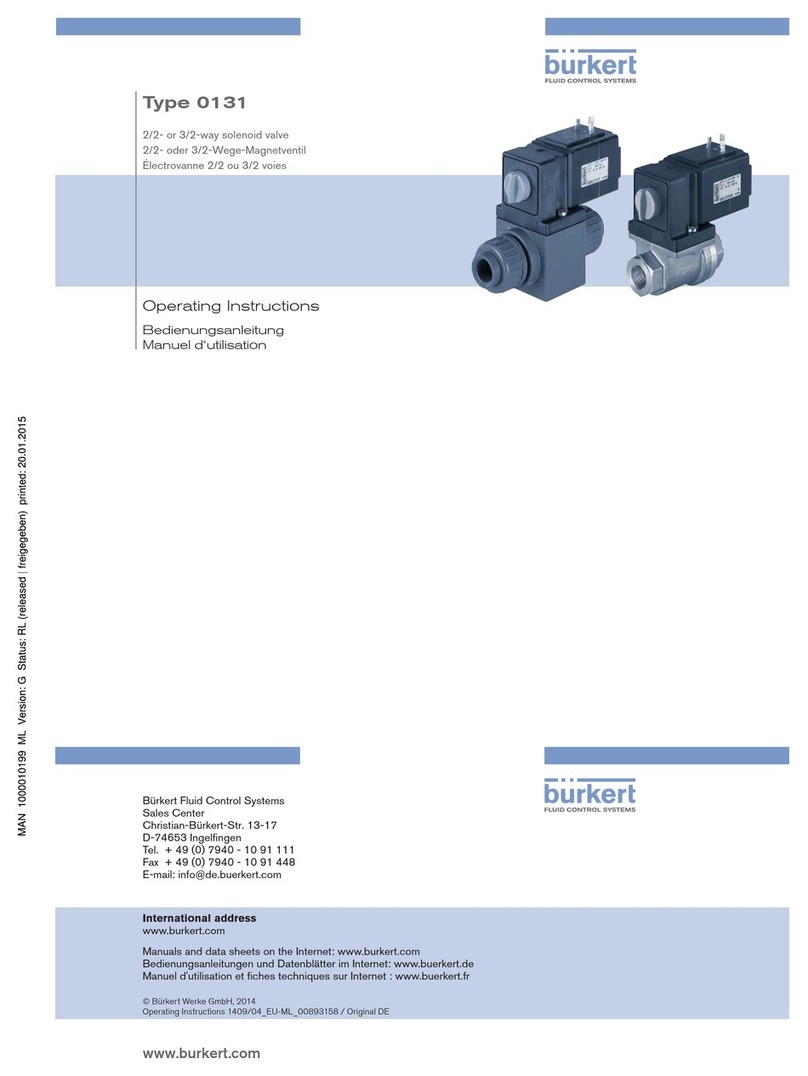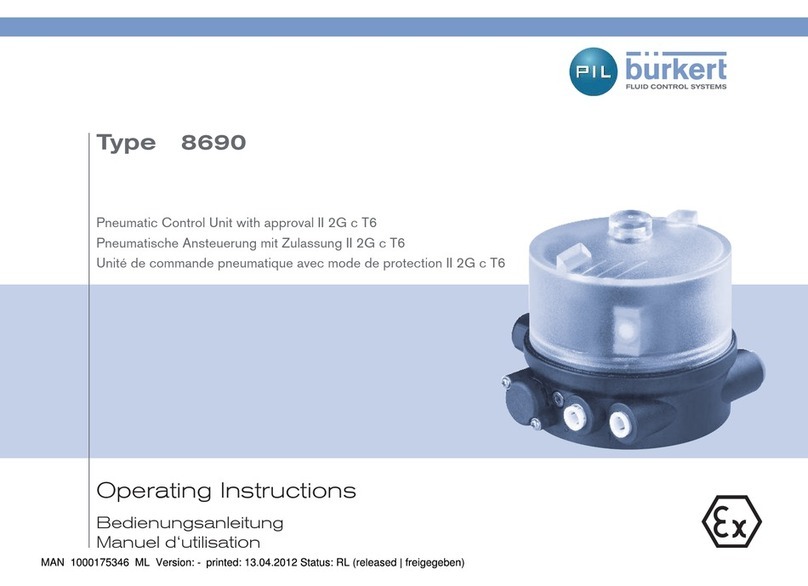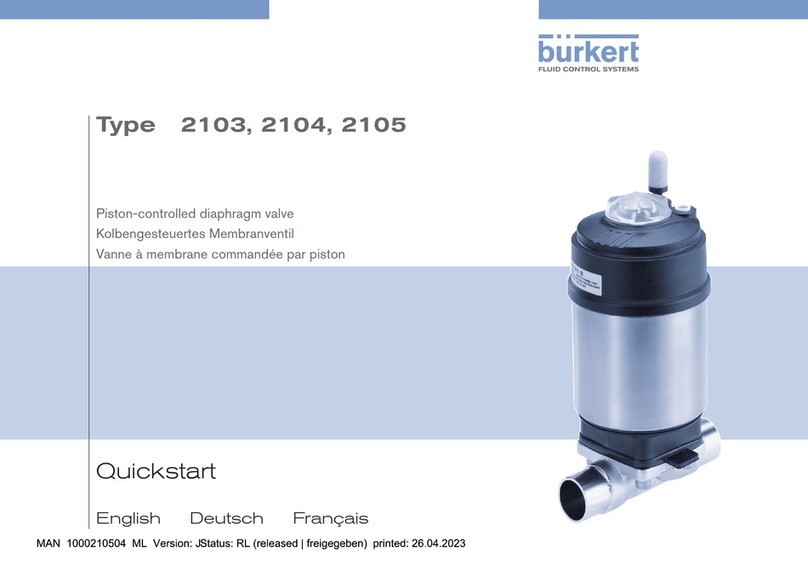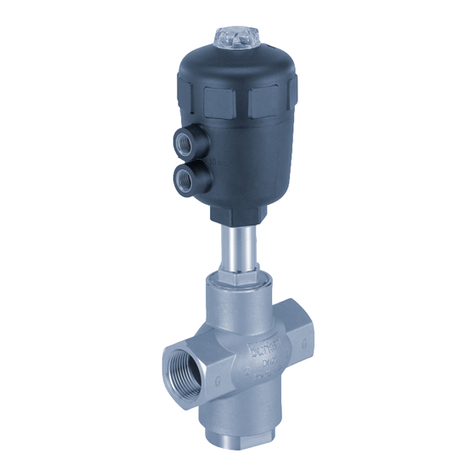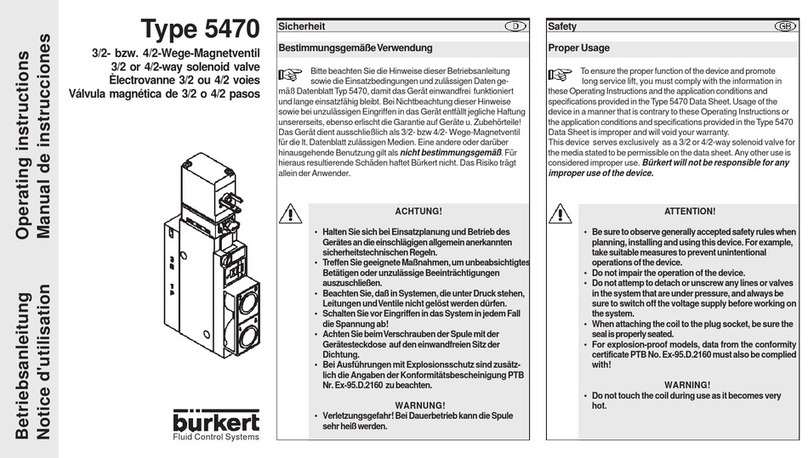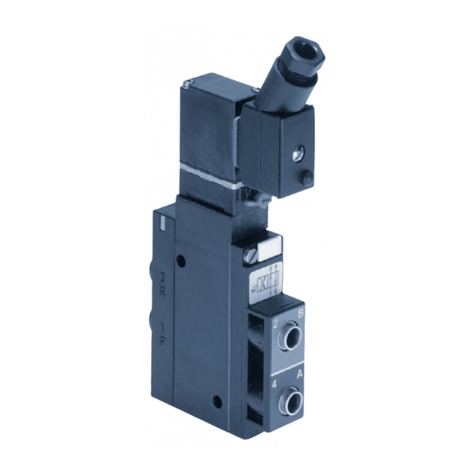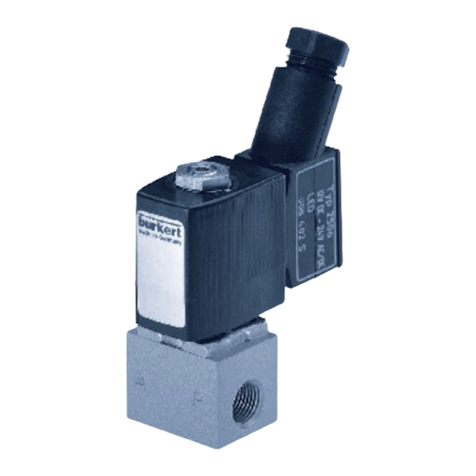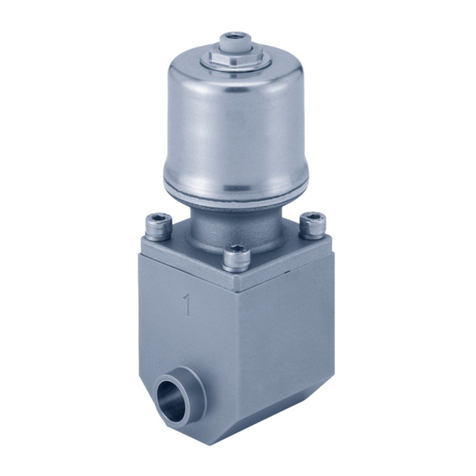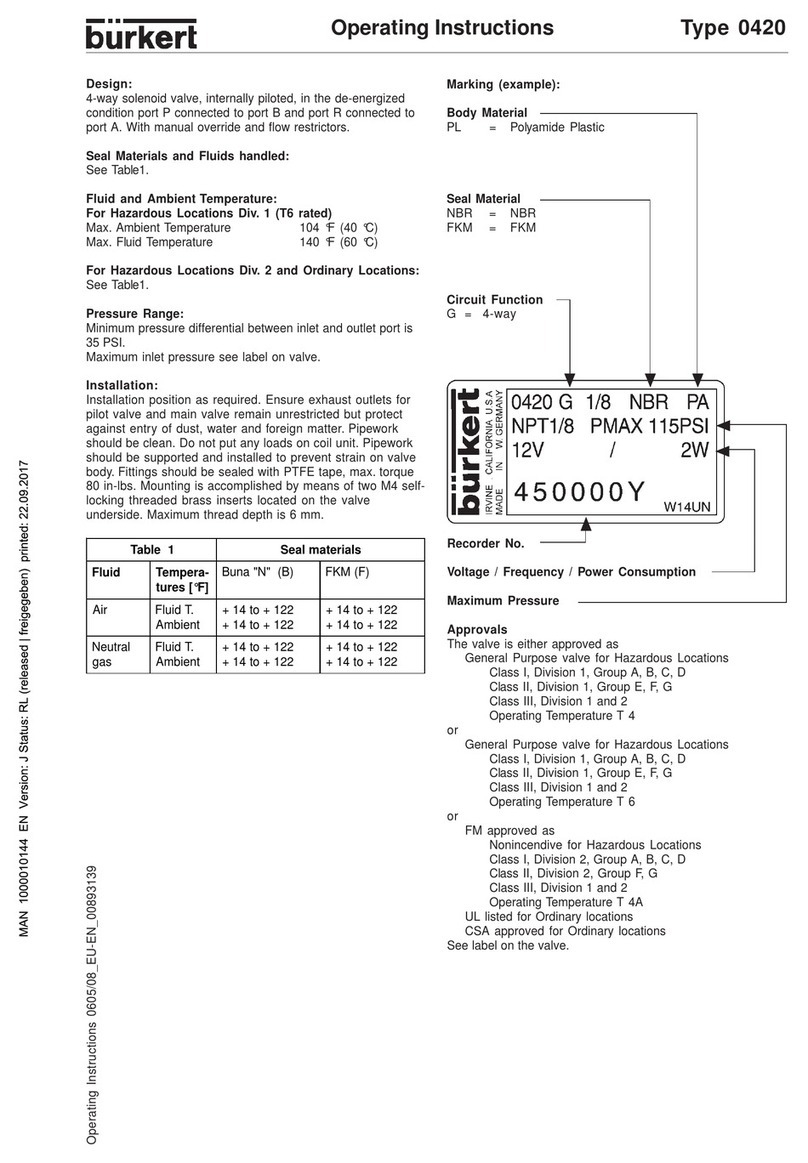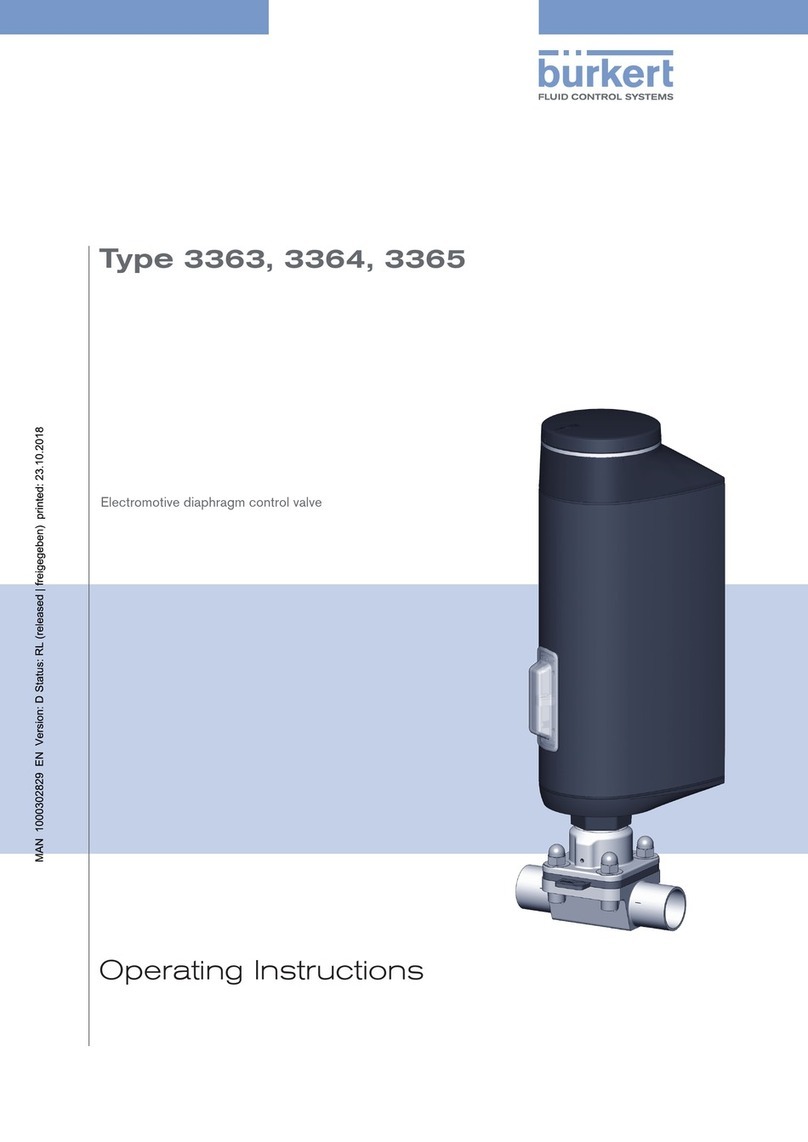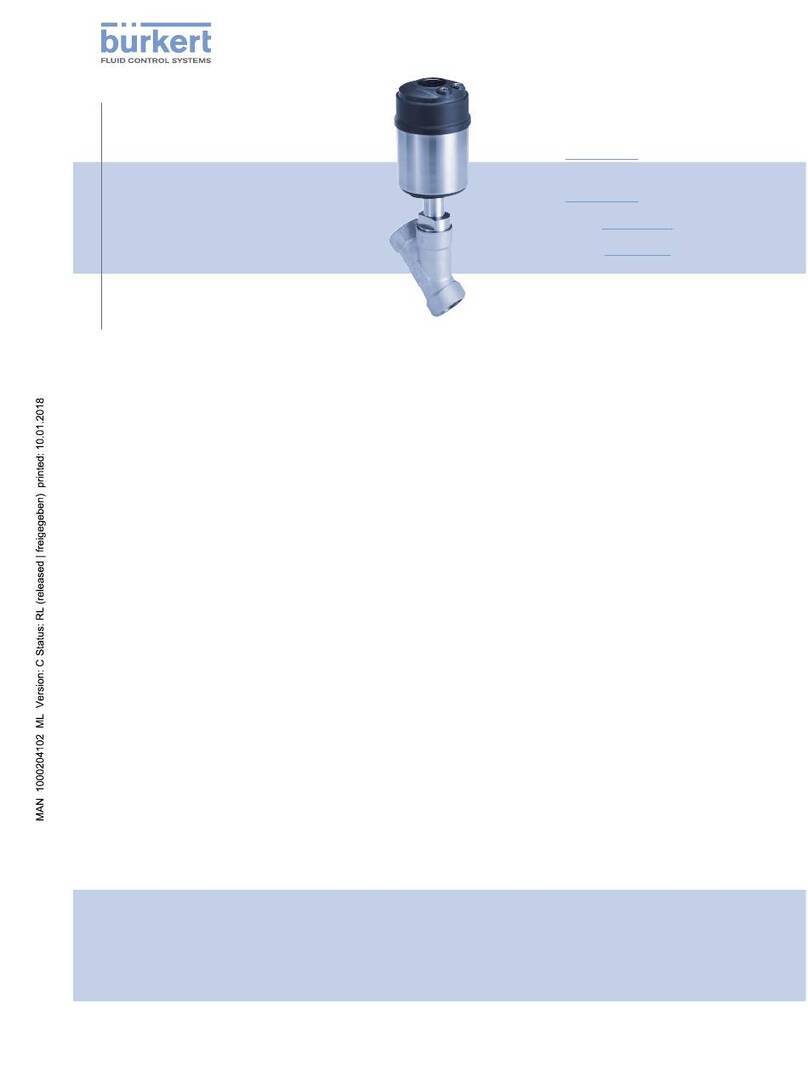
3
Quickstart
Type 2060 INOX
2.1 Symbols
Warns of fatal or serious injuries:
DANGER!
Warns of an immediate danger!
WARNING!
Warns of a potentially hazardous situation!
Warns of moderate or minor injuries:
CAUTION!
Warns of a potential danger!
NOTE!
Warns of damage!
Important tips and recommendations.
→Designates a procedure which you must carry out.
3 INTENDED USE
The Type2060 INOX angle seat valve is designed to control the
ow of liquid and gaseous media.
•To use the device, observe the permitted application conditions.
•Only use the device when it is in perfect condition; always ensure
proper storage, transportation, installation and operation.
•In potentially explosive environments, the device must only be
used in accordance with the specications on the separate
Ex-type label. The additional information and safety instructions
relating to Ex areas enclosed with the device must be adhered
to when deploying the device.
•Devices without a separate Ex type label must not be used in the
potentially explosive atmosphere.
•Use the device only in conjunction with third-party devices and
components recommended or approved by Bürkert.
•Only use the device as intended.
4 BASIC SAFETY INSTRUCTIONS
Danger from high pressure.
▶Before loosening lines or valves, switch o the pressure and
bleed/drain the lines.
Danger due to electrical voltage.
▶Before reaching into the device or the system, switch o the
power supply and secure to prevent reactivation!
▶Observe the applicable accident prevention and safety regu-
lations for electrical devices!
Risk of crushing due to moving pneumatic port.
▶Do not touch the moving pneumatic port when opening and
closing the device.
▶Do not reach into the area directly above and below the pilot
air port.
Risk of pressure surge ow with ow direction above the seat.
▶Because of the risk of pressure surge, angle seat valves with the
ow direction above the seat must not be used for uid media.
English
